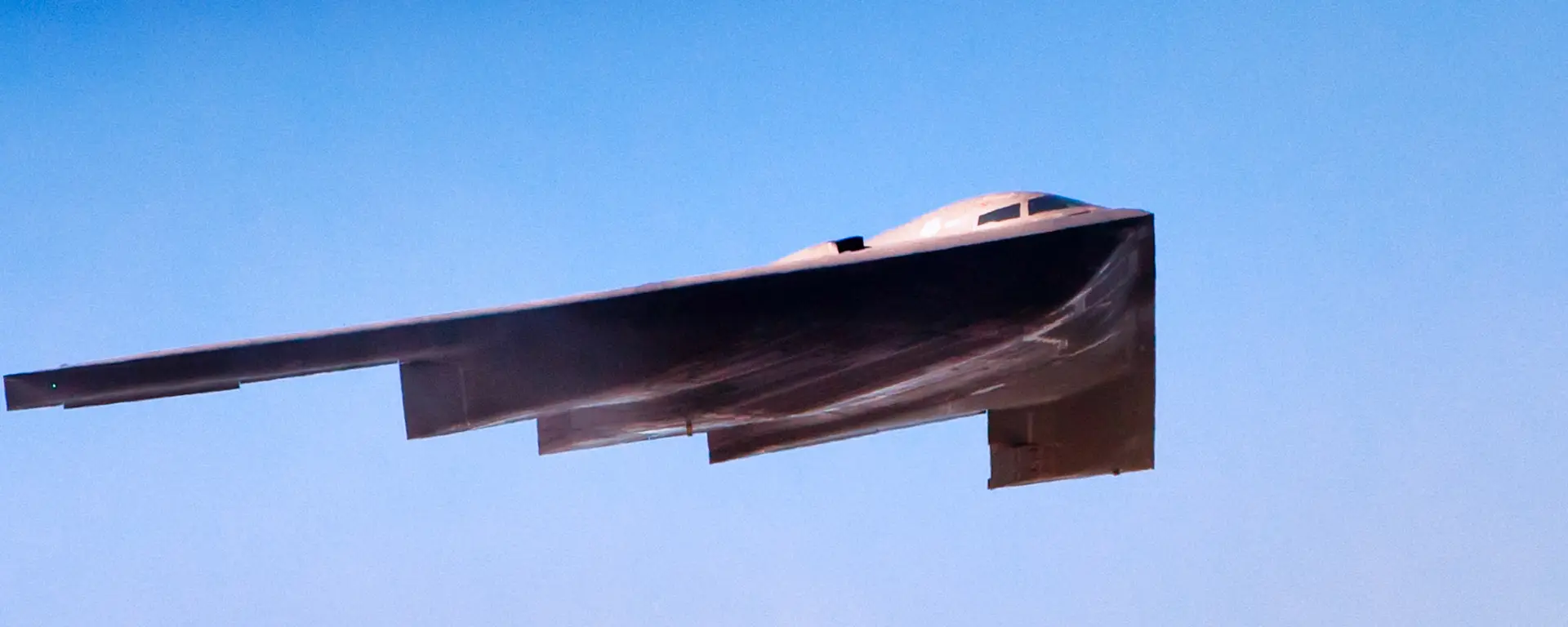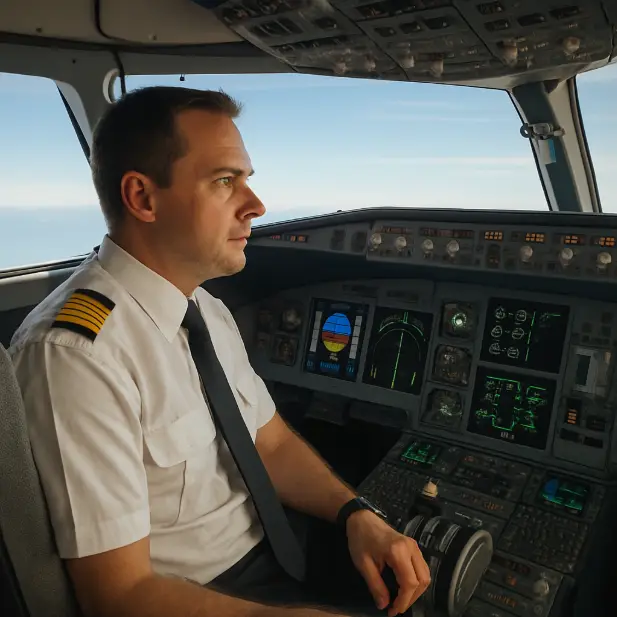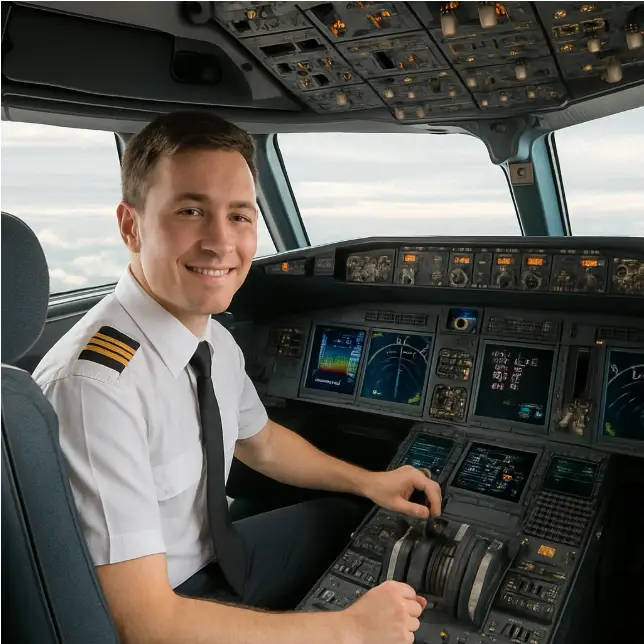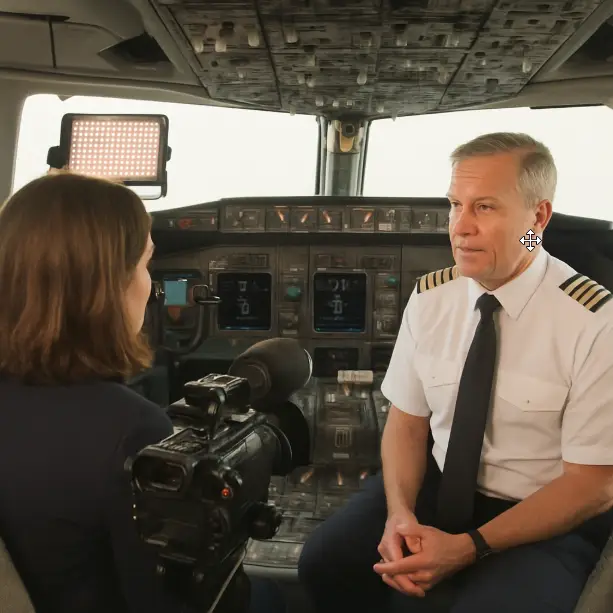Riding the Black Triangle: What It Takes to Fly a B-2 Global Strike Mission

- aviatorpro_6714
1. “Generation” Day: Why the Clock Starts 48 Hours Early
B-2 crews call long-range strike preparation “generation.” Two full days before take-off, the pilots (usually two, occasionally three when a mission commander is being seasoned) move into a secure planning cell at Whiteman AFB, Missouri, or a forward-deployed “lily-pad” like Diego Garcia.
- Mission Planning Marathon. Commercial captains review a flight release and dispatch packet that a whole airline team has built for them. A B-2 crew, by contrast, spends 12–16 hours themselves building the route on classified software: weaving through radar coverage, stitching in tanker tracks, plotting hostile SAM envelopes that move with time, and timing weapon releases to the second.
- Physio Checks & Ambulatory ECGs. They also undergo medical screening—resting ECG, blood pressure, hydration, and an interview with a flight surgeon. The Air Force wants “no hidden colds” because a stuffy Eustachian tube can become crippling after 30 hours at 28 000 feet in a tight mask.
2. Packing for a 30-Hour War
Airline pilots toss a bag behind the seat. B-2 crews pack like astronauts:
| Item | Why It’s Needed on a B-2 | Commercial Equivalent |
| Modular Arctic Survival Kit | Overflies the North Pole and Siberia; ejection could land them on ice. | Life vest in over-water ops |
| MRE-style “B-2 Meals” | Dehydrated entrées trimmed to avoid crumbs—crumbs jam stealth vents. | Crew meal from catering |
| Physiological Monitoring Patch | Transmits pulse, O₂ sat, and core temp to flight surgeon in a vault. | None |
| Classified mini-laptop (“Brick”) | Holds digital target folders and retasking data. | EFB (Electronic Flight Bag) but unclassified |
| “Piddle Packs” & Relief Tube Adapter | There is no lavatory—each pilot gets four. | Lavatory aft of cockpit |
3. The Cockpit: Dark, Cold, and Smaller Than You Think
At 0430 local, the pilots walk across the hush-house and crawl through a narrow hatch on top of the left wing into a cockpit barely wider than a Ford Focus. Once the clam-shell canopy seals, white lights dim to night-vision green.
- Ejection Seats at 60° Recline. The seats keep blood in the torso for G-onset and let pilots sleep in a quasi-supine posture; many strap a memory-foam wedge behind the helmet.
- Temperature Control Games. RAM coatings on the skin can bake under sun; the crew cycles between 55 °F and 75 °F in minutes. They often fly in thermal underwear topped by the flight suit, then add layers mid-mission.
4. Takeoff and the Invisible Exit
A B-2 “goes stealth” the moment its landing gear tucks in. Radios drop to whisper mode; transponders squawk secure codes that only select receivers can read. Unlike an airliner that files IFR and chats with ATC, Spirit 87’s route is filed under classified call-signs that civilian controllers see only as “Special Use Airspace.”
5. Rendezvous in the Stratosphere: Aerial Refueling Ballet
A single B-2 sortie may need four to six tankings. Commercial jets never plug into another airplane at 26 000 feet while dark and radio-silent.
- Pre-Contact Checks. INS nav errors are trimmed to <0.2 NM; pilots don NVGs, the boom operator kills external lights, and both aircraft tuck into a racetrack in the middle of the ocean.
- The Green Donut. The tanker projects an infrared “doughnut” ring. The B-2 must slide the refueling receptacle until the ring centers on a windscreen combiner glass—no HUD symbology helps.
- Fuel Flow & Trim Dance. As 50 000 lbs of gas transfers, the CG shifts aft; pilots chase it with stab trim and tiny power changes so the boom doesn’t disconnect.
6. Fatigue Mitigation: Naps, Drugs, and “The Ladder”
FAA Part 117 limits airline duty to 14 hours with augmented crew. The B-2 has no bunk and no relief crew. How do two humans stay effective for 30?
- Strategic Napping. Before weapon release, each pilot takes a 2–3 hour sleep while the other flies. They recline, pull a “cocoon curtain” over the panel to block stray light, and wear ear-buds pumping pink noise.
- “Go” and “No-Go” Pills. The Air Force authorizes modafinil (stimulant) and temazepam (sleep aid) under flight-surgeon control. Dosage logs are part of mission paperwork.
- The Ladder. A cognitive checklist: hydrate, eat, stretch, oxygen, checklist cross-talk. Every tanker leg they stand up (seat harness loosened), stretch hamstrings, and swap flying duties.
7. Biological Necessities at 0.8 Mach
No bathroom means piddle pack mastery. The dance: AP (autopilot) on, harness loosened, mask off but oxygen cannula in, unzip, attach relief tube adapter, re-zip. For bowel needs—rare but real—a “WAG bag” solidifies waste. Crews practice on the ground because losing a glove inside the seat track could jam flight controls.
8. Weapons Employment: The Quietest Minutes in Aviation
Commercial pilots brief TOD (top of descent). B-2 crews brief 12 separate Target Time On Weapons to the second.
- Stealth Tactics. Radar cross-section the size of a marble means the jet must stay in predicted radar nulls; a single 100-foot track error could pop on early-warning radars.
- Weapons Bay Ballet. Doors open only 1.5 seconds before bomb release to minimize signature; computers sync door actuators and bomb shackles automatically, but the crew monitors four MFD pages for door and lanyard status.
- Comm Windows. Unlike airline ACARS chatter, the B-2 may spend hours EMCON silent; after weapons impact, they climb to a SATCOM window to send encrypted BDA.
9. Hydration & Nutrition: Crumb-Free Calories
Airline crews get a hot entrée every four hours. B-2 meals are vacuum-packed tortillas, almond-butter pouches, and electrolyte gummies—food that won’t crumb or smell; crumbs are FOD, and strong odors seep into the low-flow ECS and linger for days inside RAM-coated ducts.
To stave off dehydration (the cockpit humidity hovers near 5 %), pilots sip 1 liter per four hours through camel-back tubes. Each hydration cycle pairs with a micro-stretch and cockpit status cross-check.
10. Psychological Bubble & Crew Resource Management
Thirty hours alone in a black triangle can induce “microwave paranoia”—the sense every blip of turbulence is a missile cue. Crews undergo scenario-based CRM that airline crews never see:
- Hostile Intercepts. They rehearse reacting to unseen MiG radar locks, including a mid-ocean vertical jink while still plugged to the tanker.
- Nuclear Surety Checks. Even on a conventional load, every switch throw is videotaped by an on-board camera for NSA-level chain-of-custody review.
11. Approaching Home Plate: Mission Isn’t Over at “Bingo Fuel”
After final tanking, the jet still has 6–8 hours home. Here’s what differs from a 787 arrival:
- Secret Squirrels on Guard Frequency. A coded HF burst tells Whiteman “safe return; payload expended.”
- Post-Flight Decontamination. The entire airframe is scanned with ultraviolet wands for hydraulic leaks; then a crew in bunny suits vacuums the cockpit for classified debris—napkin doodles count.
12. Recovery, Debrief, and Re-Circadian Life
Pilots stumble down the ladder having been awake 36–40 hours. Airline duty rest is 10 hours; B-2 crews enter a 72-hour mandatory recovery window monitored by actigraphy watches.
- Immediate Debrief. A 4-hour download with intel, maintenance, and medical starts the moment they sip post-flight soup. They must recall fuel burns to the 100 lbs and every sensor anomaly.
- Sleep Discipline. They must stay awake through the debrief to avoid crashing at 11 a.m. local and ruining circadian reset. Flight surgeons often prescribe melatonin that night to anchor the new cycle.
13. What Commercial Pilots Never Have to Do
| B-2 Long-Range Crews | Airline Captains |
| Plan & update a mission route through moving hostile envelopes, alone with classified software. | Dispatch department handles routing & NOTAMs. |
| Execute 4–6 aerial refuelings, night, NVG-only, radio-silent. | Never refuel mid-air. |
| Sit in a cockpit the size of a phone booth for 30 h with no lavatory. | Walk around, use lavatory, stretch in galley. |
| Maintain EMCON silence for hours; no external lights. | Continuous ATC comms & anti-collision strobes. |
| Manage stealth systems (RAM temp, signature monitors). | No stealth management. |
| Alternate strategic naps while the other pilot flies single-handed in combat airspace. | Relief crew or bunk rest under Part 117. |
| Wear full HGU-55/P helmet, oxygen mask, anti-exposure suit layers. | Light headset, uniform. |
| Potentially deliver nuclear ordnance; require two-person consent for every arming step. | Transport passengers & cargo. |
| Undergo chain-of-custody debriefs, medical checks, and 72-h post-mission recovery. | Simple post-flight paperwork, 10-h mandatory rest. |
Conclusion: The Human Behind the Carbon-Fiber Shadow
Flying a B-2 for 30 hours is equal parts technical mastery, physiological chess match, and psychological marathon. The aircraft’s exotic stealth skin and global-strike reach grab headlines, but beneath that faceted shell sit two human beings wrestling all the frailties airline pilots face—and dozens more they don’t.
They choreograph aerial refuel ballets in radio silence, eat crumb-free tortillas so stealth ducts stay clean, manage hydration without a lavatory, and cat-nap while gliding over hostile territory that cannot even see them. When they finally step back onto the Missouri tarmac, the jet still hums with residual heat from stealth coatings, yet the crews’ world has shrunk to a simple yearning: a hot shower, eight straight hours of sleep, and the knowledge that somewhere, a conflict might have been shortened because they lived 30 hours inside a winged shadow.



